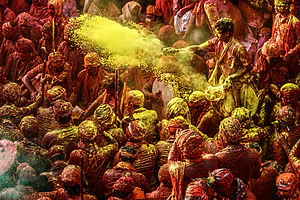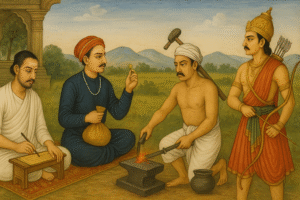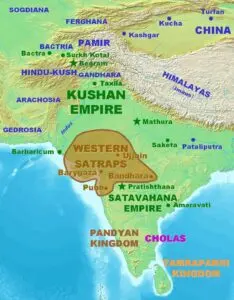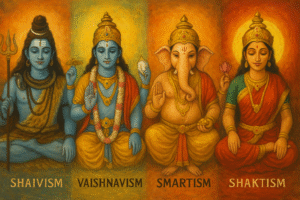The Nagas hold a prominent place in indian mythology, religious traditions, and history. Revered as serpent deities, the Nagas have been worshipped across India for centuries, embodying both benevolent and fearsome qualities.

The tradition of serpent worship, rooted in ancient beliefs, has influenced religious practices, festivals, and regional folklore, with the Nagas symbolizing fertility, life, death, and immortality. This article explores the origins, beliefs, and cultural impact of Naga worship in India, highlighting its significance in shaping ancient religious practices and its continued relevance in modern times.
1. Origins of Naga Worship
The tradition of Naga worship in India likely emerged from the early human interaction with snakes, particularly in regions where these creatures were common. The fear of their venom, combined with admiration for their regenerative abilities—such as shedding skin and seeming to renew themselves—gave rise to reverence for snakes as powerful symbols of both life and death.
- Indus Valley Civilization: Archaeological evidence from the Indus Valley Civilization (circa 2500 BCE) indicates that serpent worship was prevalent in early Indian culture. Snake-shaped artifacts and totems have been discovered, suggesting a deep connection to the natural world and belief in snakes as sacred beings.
- Totemism and Nature Worship: In early communities practicing totemism, animals like snakes were revered as ancestors or protectors. Over time, these beliefs evolved into a more structured form of worship, where the Nagas (serpent deities) became central figures in the religious and spiritual practices of ancient India.
2. Nagas in Hindu Mythology
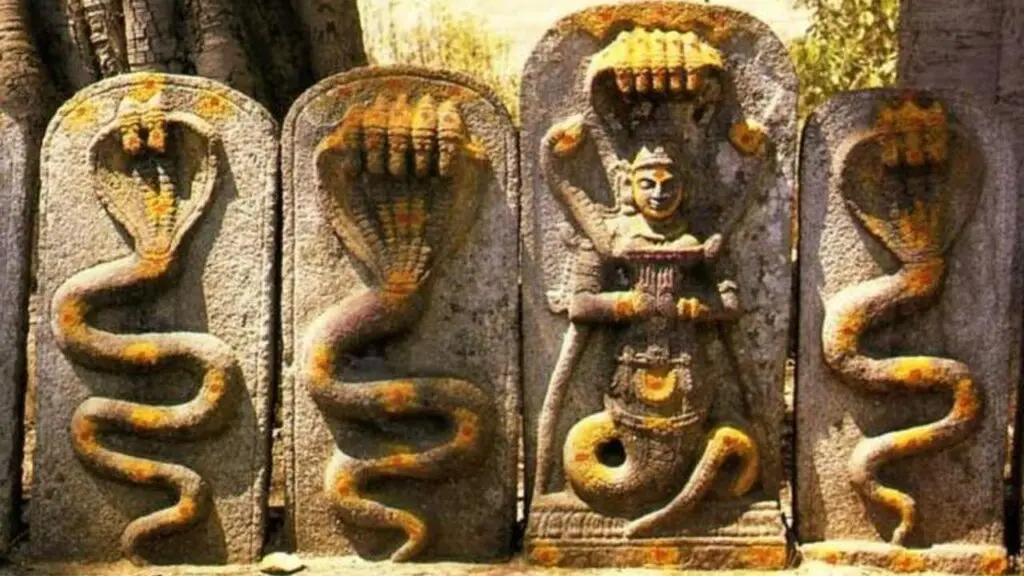
In Hindu mythology, Nagas are considered semi-divine beings, often portrayed as having the ability to take both human and serpent forms. The Nagas play significant roles in many ancient Hindu texts and epics, such as the Mahabharata, Ramayana, and Puranas. They are seen as protectors of water bodies such as rivers, lakes, and oceans, and are believed to have control over natural forces like rain, which directly impacts agriculture and fertility.
Key Naga Deities in Hinduism
- Shesha (Ananta):
- Role: Shesha, also known as Ananta, is the king of all Nagas and serves as the cosmic bed of Vishnu, the preserver god. He is often depicted as a massive serpent floating in the cosmic ocean, supporting Vishnu as he rests between cycles of creation.
- Symbolism: Shesha represents stability and the cosmic order. He is said to hold the universe on his hood, symbolizing balance and control.
- Vasuki:
- Role: Vasuki is a significant Naga who played a crucial part in the mythological event of Samudra Manthan (churning of the ocean). He acted as the rope, coiled around Mount Mandara, with the gods and demons using him to churn the ocean and produce the nectar of immortality (amrita).
- Symbolism: Vasuki is associated with loyalty and strength, as he serves both gods and demons in different contexts. His association with the nectar of immortality highlights the Nagas’ connection to eternal life.
- Manasa:
- Role: Manasa is the goddess of snakes and is revered in various parts of India, especially in Bengal and Assam. She is invoked for protection against snake bites and is also associated with fertility and prosperity.
- Symbolism: Manasa is often depicted as a compassionate protector of her devotees, although her backstory involves conflicts with other deities, which reflect the tension between the Nagas and the gods in Hindu lore.
- Takshaka:
- Role: Takshaka is a powerful Naga mentioned in the Mahabharata. He is most known for killing Parikshit, a descendant of the Pandavas, by biting him and leading to his death.
- Symbolism: Takshaka represents the destructive power of serpents. His actions in the Mahabharata also symbolize the inevitable nature of death and the unpredictability of fate.
Nagas and Water
Nagas are often associated with water bodies in Hindu belief, representing life-giving forces essential for agricultural fertility. Many temples and shrines are located near rivers, lakes, or ponds, where Nagas are honored as guardians of these sacred waters. In some regions, rituals are performed to ensure that the Nagas bless the land with sufficient rainfall, helping to nurture crops and sustain livelihoods.
3. Naga Worship Across India
Naga worship developed into a highly influential tradition in India, forming a key part of religious and cultural life from the Himalayas to the southern coast. While the practice took on various regional forms, Nagas were universally regarded as powerful beings capable of both protection and destruction.
Nagas in Kashmiri Legends
In Kashmiri folklore and history, the Nagas are intimately connected to the region’s geography and culture.
- Nagas as Guardians of Kashmir: According to Kashmiri legends, the Nagas were the original inhabitants of Kashmir, living in the lakes and rivers that filled the region. In particular, the famous lake Satisar is said to have been home to many Nagas before the sage Kashyapa drained the area, making it habitable for humans. Some of the important Nagas worshipped in Kashmir include Nila Naga and Ananta Naga.
- The Naga-Pishacha Conflict: Legends describe a conflict between the Nagas and Pishachas (demonic entities) in ancient Kashmir. The Nagas are portrayed as protectors of the land, while the Pishachas are depicted as destructive forces. This tale symbolizes the battle between life-giving water (Nagas) and destructive elements (Pishachas).
- Naga Worship: Even today, several places in Kashmir are named after Nagas, such as Anantnag, which means “the abode of the infinite Nagas.” The region’s reverence for these beings persists in some local traditions.
Kerela:
In Kerala and along the Malabar Coast, the tradition of serpent worship continues through the maintenance of sacred groves known as Sarpa Kavu. These protected natural areas are dedicated to Nagas, where rituals and prayers are performed to ensure fertility, health, and protection of the land.
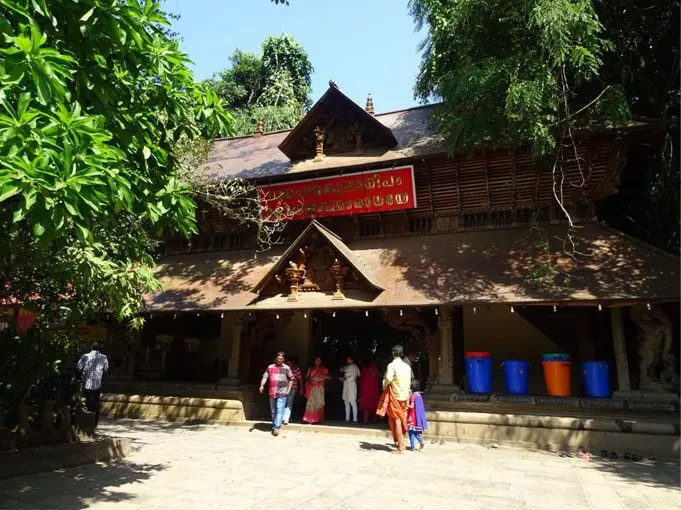

West Bengal and Odisha:
In eastern India, particularly in West Bengal and Odisha, the worship of Manasa Devi, the serpent goddess, is still widely practiced. Manasa Puja is held during the rainy season, with devotees offering prayers for protection from snake bites and for agricultural fertility.
4. Naga Panchami: The Festival of Serpent Worship
One of the most important festivals dedicated to serpent worship in India is Naga Panchami, celebrated across different states. Held during the month of Shravana (July-August), this festival honors the Nagas and seeks their protection from danger, especially snake bites.
- Offerings and Rituals: On Naga Panchami, images and statues of serpents are worshipped with offerings of milk, flowers, and sweets. In some regions, live snakes are also revered during the festival, and people perform special rituals to appease them. This practice highlights the reverence for the Nagas’ dual nature as both protectors and potential threats.
- Symbolism of Naga Panchami: The festival also symbolizes the gratitude of agricultural communities towards the Nagas, who are believed to control rainfall and soil fertility. It is a time to seek their blessings for a prosperous harvest and protection from natural calamities.
5. Nagas in Buddhism and Jainism
The reverence for Nagas extends beyond Hinduism into Buddhism and Jainism, where they are also seen as protectors and powerful spiritual beings.
- Buddhist Traditions: In Buddhism, one of the most well-known Nagas is Mucalinda, a serpent who shielded the Buddha from a storm while he meditated under the Bodhi tree. This act of protection illustrates the benevolent role of Nagas in guarding both people and spiritual knowledge.
- Jain Traditions: In Jainism, Nagas are considered celestial beings who protect sacred knowledge and spiritual treasures. They often appear in stories as guardians of temples or as protectors of the faithful.
6. Manasa Devi – The Goddess of Serpents
Manasa Devi, the snake goddess, holds a special place in the serpent worship tradition of India. She is particularly revered in the eastern regions, where she is seen as the protector from snake bites and a giver of fertility and prosperity.
- Worship and Festivals: Devotees celebrate Manasa Puja, offering prayers and sacrifices to the goddess to seek her protection from snake bites and for blessings in fertility and health. Her worship is especially important among rural and agricultural communities, who rely on her favor for a good harvest.
- Iconography: Manasa Devi is often depicted as a beautiful woman seated on a lotus or surrounded by snakes, symbolizing her dominion over serpents and her nurturing, motherly qualities. She is seen as both a healer and protector, embodying the duality of the serpent’s nature.
Conclusion
The worship of Nagas in India has a deep and enduring legacy, reflecting the rich cultural and religious traditions of the region. From their origins in the Indus Valley Civilization to their continued veneration in Hindu, Buddhist, and Jain practices, Nagas have remained central figures representing fertility, life, death, and renewal. Their symbolic power is still evident today in festivals like Naga Panchami and the worship of deities like Manasa Devi, demonstrating how ancient traditions continue to shape modern religious life in India.

